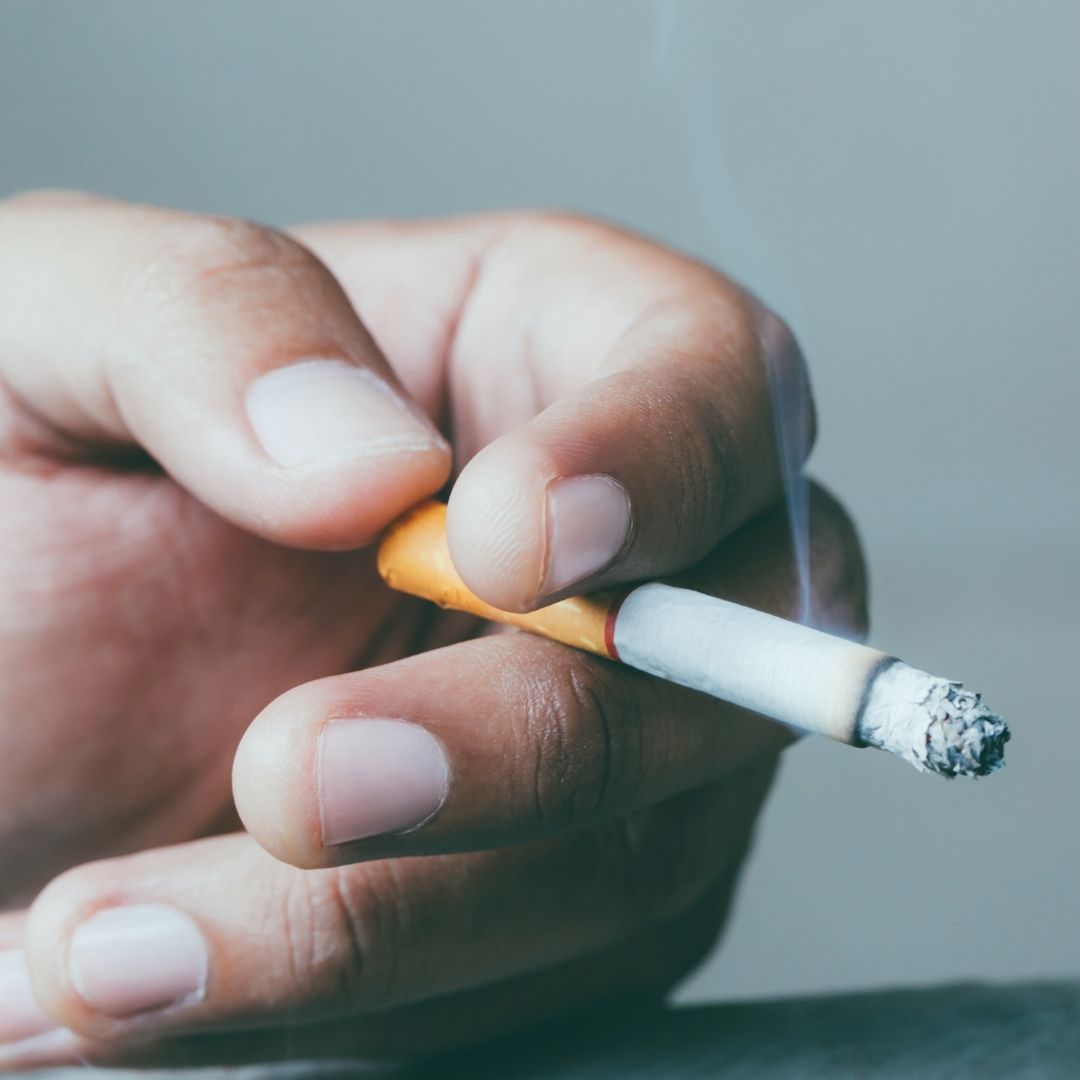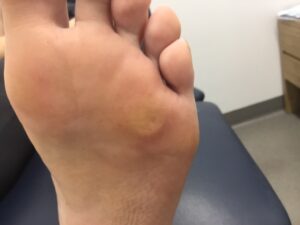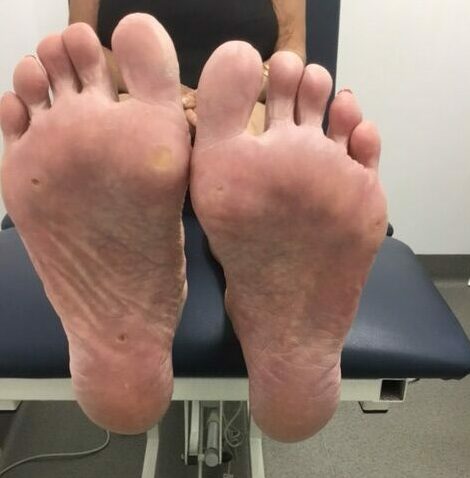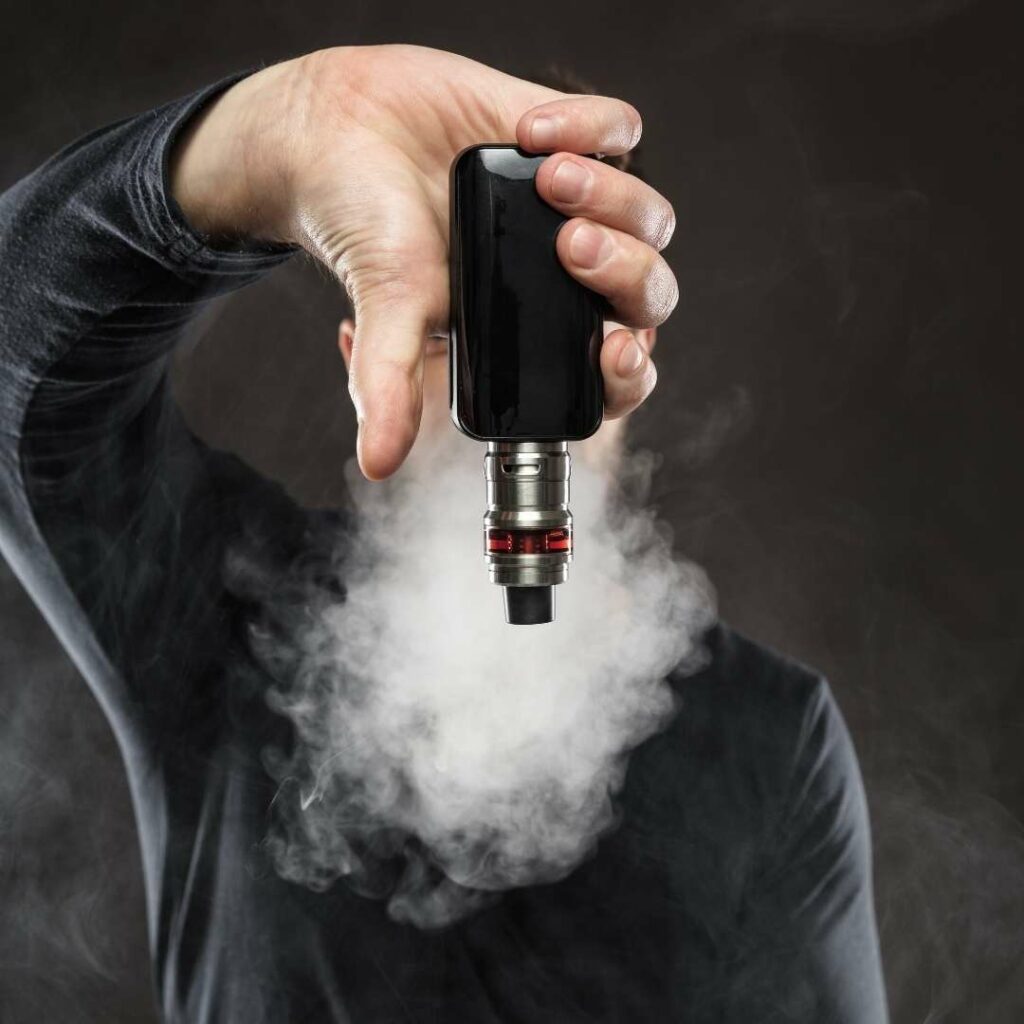
10 Dec Can smoking give you a corn on your foot?
Can smoking give you a corn on your foot?
Smokers Corns, also known as fibrous corns, neurovascular corns or intractable plantar keratoderma (IPK) are well known to Podiatrists but might come as a surprise to the general public.
About a year ago, a young 20-something-year-old woman presented to our clinic for treatment of the most painful corn under her foot. It was so painful she was thinking about changing her career! I took one look at her corn, I knew she was a smoker. I politely asked her and she confirmed, yes she was a smoker but was trying to quit, how on earth did I know? The appearance of these corns is so obvious to me now as I have seen so many of them! I told her there was hope, quit smoking and it is possible this little monster could magically disappear! I have seen it happen many times.
What do they look like?
These corns are painful, very deep, very sensitive, and come back quickly. Sometimes debriding them gives no relief. They have waxy or rubber-like white scar tissue in the center. Often they have a nerve supply and/or blood vessels within the lesion. For this reason, they can be easily confused for a wart/verruca.


How does this happen?
The first reason is that chemicals from smoking cause the tiny blood vessels in the skin to constrict/close. This is known as vasoconstriction. Just one single cigarette can cause the vessels to shut down for up to 90 minutes! This could mean an estimated 42% reduction in blood flow to the feet and toes. Nicotine is the main chemical to blame. It plays with your sympathetic nervous system, releasing epinephrine a hormone that causes vasoconstriction of the peripheral vessels. This reduction in blood flow means the skin is not getting the blood it needs. It can start to break down and even die. Thinner skin or more fragile skin on the bottom of your feet is not a good thing.
The second reason is smoking causes your blood to become thicker from sticky platelets. The blood cannot flow smoothly and efficiently through the vessels which can cause micro-clots.
Reduced blood equals reduced oxygen to tissues. This is called hypoxia and can lead to tissue death.
Collagen and Elastin are also affected. Damage to these connective tissues means more wrinkles but also delayed healing of injuries or wounds.
The story continues: THE RETURN OF THE CORN
This lovely lady returned to the clinic this week with her tail between her legs. She had started smoking cigarettes a week ago and the nasty corn was back! She said she had been vaping for the last year which meant controlling her nicotine consumption herself. By reducing the amount of nicotine by vaping, the corn had disappeared! Going back to cigarettes, slipping back into that habit had given her the harsh reminder she needed. She knew what she had to do.
I am so grateful she shared her story with me. I hope it will help others in the future.

If you think you have one of these corns and would like to get rid of it what should you do?
- Book an appointment with a podiatrist- we need to make sure of what we are treating. A corn can easily be mistaken for a wart or we could be looking at a little abscess from a foreign body (like dog hair). If it is a corn, we will debride back the hard dead skin and apply some padding to take the pressure away. This should reduce your pain instantly.
- Keep your skin soft by using a good foot cream or heel balm. We recommend Restorate with 30% urea. This will reduce your pain and make the corn easier to treat.
- Wear shoes to stop excessive callus build-up.
- DON’T USE CORN PADS FROM THE CHEMIST! These pads contain acid and will leech into your healthy skin and cause a chemical burn, making everything a lot more painful for you.
- QUIT SMOKING!
For more information: RELATIONSHIP BETWEEN SMOKING AND PLANTAR CALLUS FORMATION OF THE FOOT

Sorry, the comment form is closed at this time.